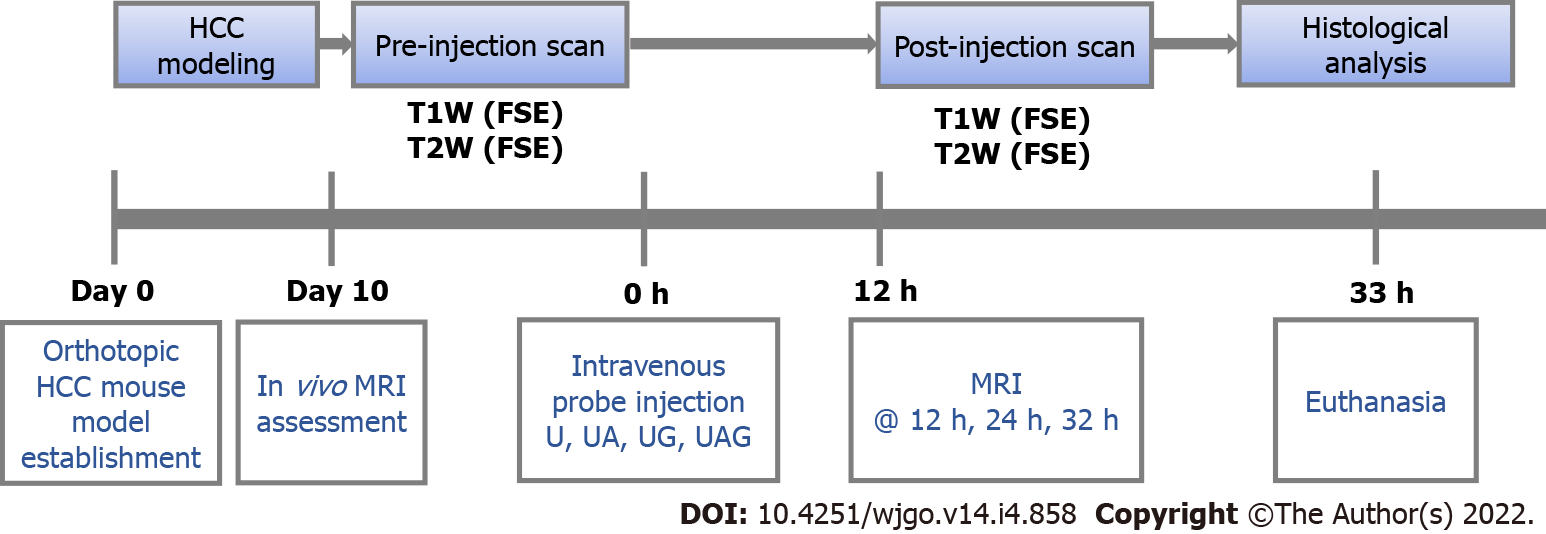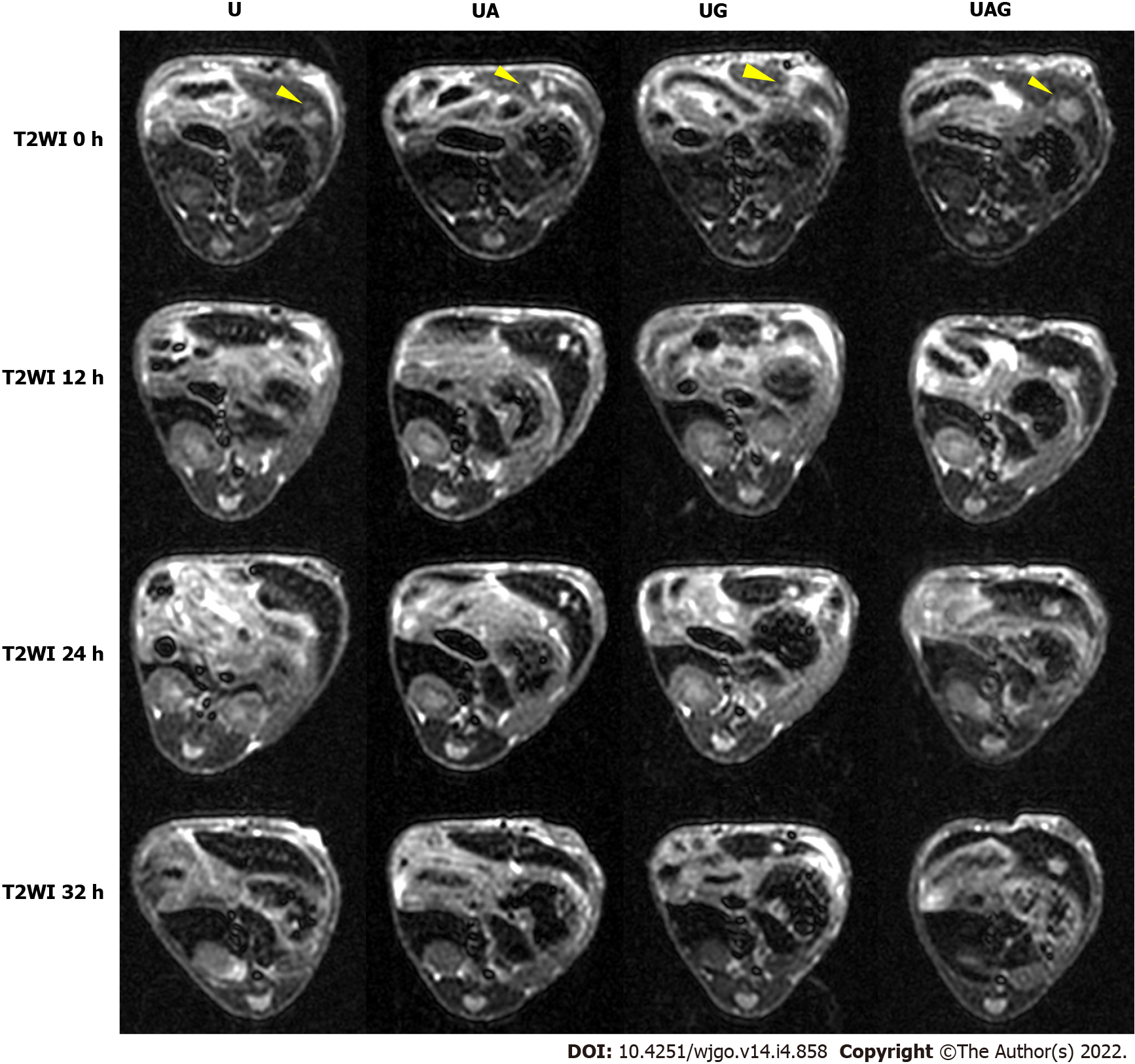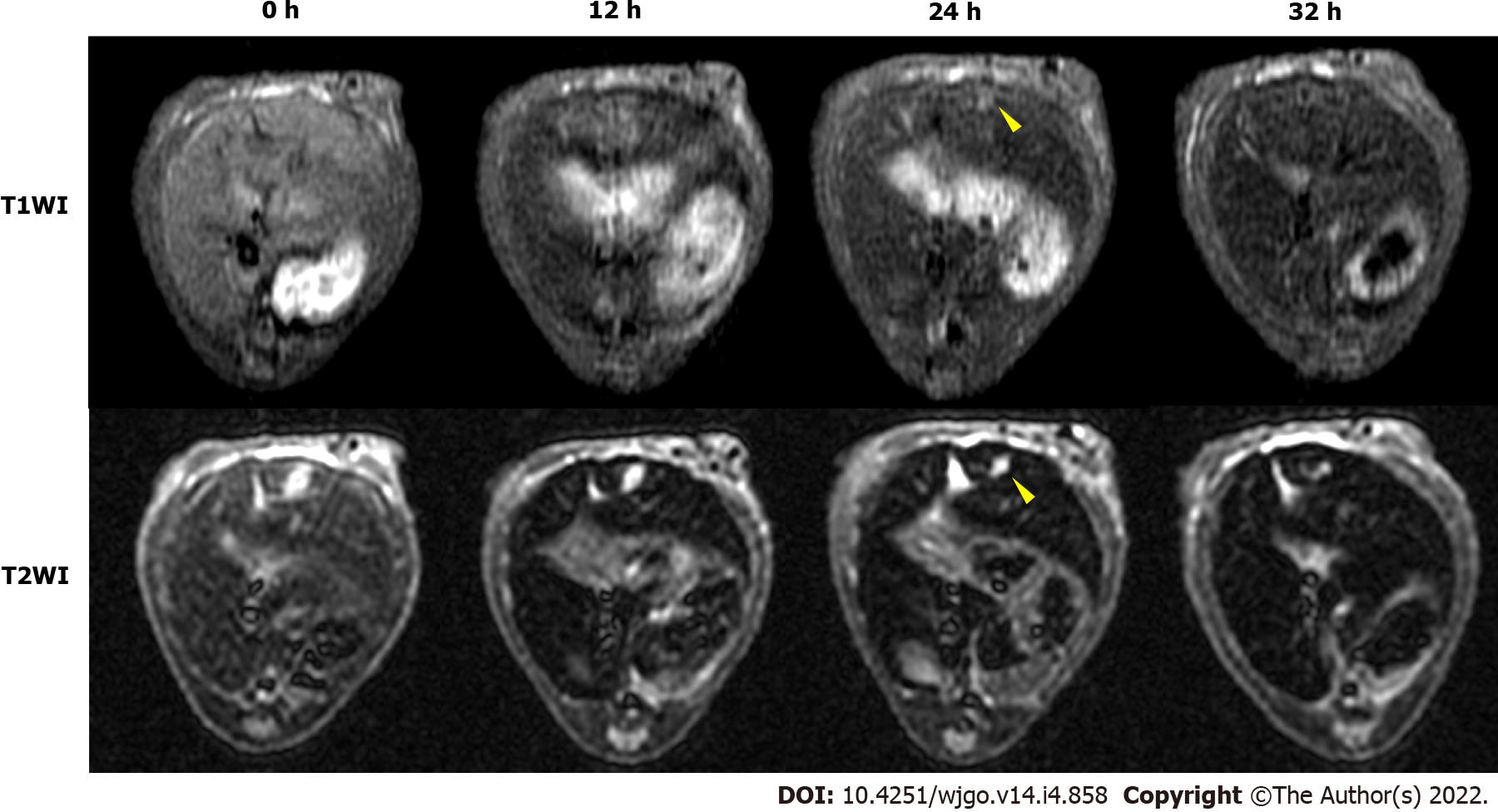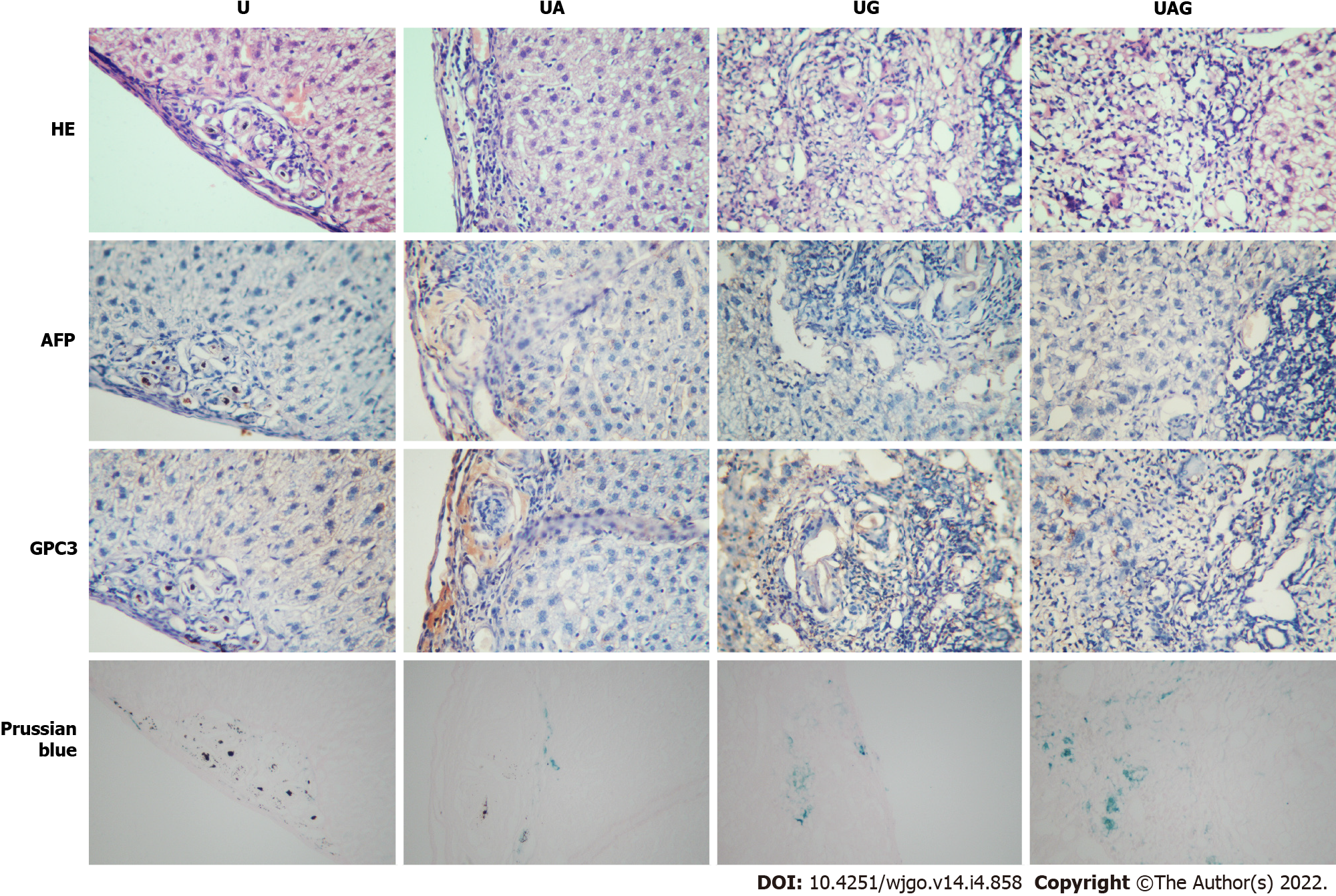Copyright
©The Author(s) 2022.
World J Gastrointest Oncol. Apr 15, 2022; 14(4): 858-871
Published online Apr 15, 2022. doi: 10.4251/wjgo.v14.i4.858
Published online Apr 15, 2022. doi: 10.4251/wjgo.v14.i4.858
Figure 1 Experiment workflow.
Probe treatment and T1- and T2-weighted magnetic resonance imaging were performed on day 10 after establishment of the orthotopic hepatocellular carcinoma mouse model. MRI: Magnetic resonance imaging; HCC: hepatocellular carcinoma; UA: Anti-AFP-USPIO; UG: Anti-GPC3-USPIO; UAG: Anti-AFP-USPIO-anti-GPC3.
Figure 2 Magnetic resonance imaging properties of ultra-small superparamagnetic iron oxide phantoms.
A: T1- and T2-weighted images of a series of 0.9% saline water solutions containing different concentrations of the ultra-small superparamagnetic iron oxide probes as indicated by iron concentration; B: Changes in the T1- and T2-weighted signal intensities according to iron concentration, with standard deviation also illustrated; C: T1 and T2 map illustrated in pseudo color under different iron concentration; D: Linear regression fitting of the longitudinal relaxation-rate (1/T1); E: transversal relaxation-rate (1/T2) data vs different iron concentrations (with standard deviation also illustrated) for extracting the longitudinal relaxivity (r1) and transverse relaxivity (r2), respectively.
Figure 3 T1-weighted images of hepatocellular carcinoma-model mice administered with ultra-small superparamagnetic iron oxide probes at various time points.
Columns represent livers treated with different probes, and the first row shows pre-injection (0 h) T2-weighted images as references for the tumor location indicated by yellow arrowhead. UA: Anti-AFP-USPIO; UG: Anti-GPC3-USPIO; UAG: Anti-AFP-USPIO-anti-GPC3.
Figure 4 T2-weighted images of hepatocellular carcinoma-model mice administered ultra-small superparamagnetic iron oxide probes at various time points.
Columns represent livers treated with different probes. (Yellow arrowhead: tumor location). UA: Anti-AFP-USPIO; UG: Anti-GPC3-USPIO; UAG: Anti-AFP-USPIO-anti-GPC3.
Figure 5 Time-dependent increasing rates of T1- and T2-weighted T/B signal ratios.
Increasing rates of T1- and T2-weighted T/B signal ratio at different time points (12, 24, and 32 h) post-injection as compared with pre-injection (0 h) of the U, anti-alpha-fetoprotein (AFP)-ultra-small superparamagnetic iron oxide (USPIO), anti-glypican-3 (GPC3)-USPIO, and anti-AFP-USPIO-anti-GPC3 probes. Data points represent averaged rates from two mice if the image quality was acceptable. A: T1-weighted T/B signal ratios; B: T2-weighted T/B signal ratios. UA: Anti-AFP-USPIO; UG: Anti-GPC3-USPIO; UAG: Anti-AFP-USPIO-anti-GPC3.
Figure 6 T1- and T2-weighted images of hepatocellular carcinoma-model mice treated with the anti-alpha-fetoprotein-ultra-small superparamagnetic iron oxide-anti-glypican-3 probe (1.
6 mg Fe/kg body weight). Top (T1WI) and bottom (T2WI) rows, from left to right: T1- and T2-weighted images, respectively, at 0 h (pre-injection) and 12-, 24-, and 32-h (post-injection). (Yellow arrowhead: Tumor location).
Figure 7 Histological results of hepatocellular carcinoma tumors treated with U, anti-alpha-fetoprotein-ultra-small superparamagnetic iron oxide, anti-glypican-3-ultra-small superparamagnetic iron oxide, and anti-alpha-fetoprotein-ultra-small superparamagnetic iron oxide-anti-glypican-3 probes.
UA: Anti-AFP-USPIO; UG: Anti-GPC3-USPIO; UAG: Anti-AFP-USPIO-anti-GPC3; USPIO: Ultra-small superparamagnetic iron oxide; AFP: Alpha-fetoprotein; GPC3: Glypican-3.
- Citation: Ma XH, Chen K, Wang S, Liu SY, Li DF, Mi YT, Wu ZY, Qu CF, Zhao XM. Bi-specific T1 positive-contrast-enhanced magnetic resonance imaging molecular probe for hepatocellular carcinoma in an orthotopic mouse model. World J Gastrointest Oncol 2022; 14(4): 858-871
- URL: https://www.wjgnet.com/1948-5204/full/v14/i4/858.htm
- DOI: https://dx.doi.org/10.4251/wjgo.v14.i4.858















